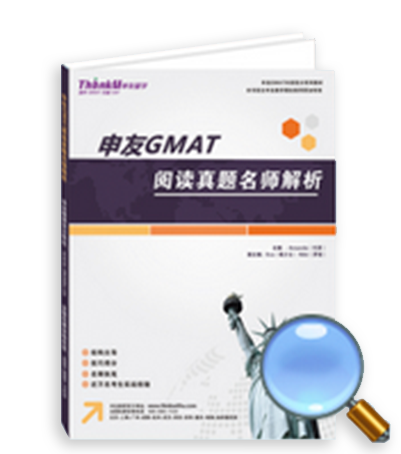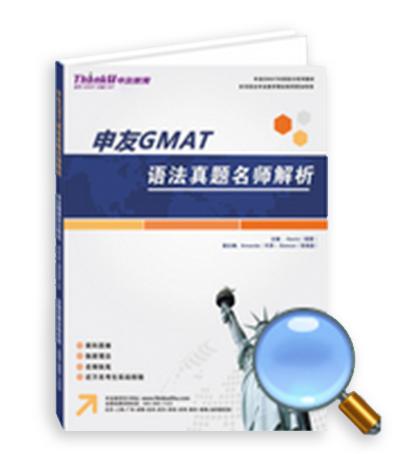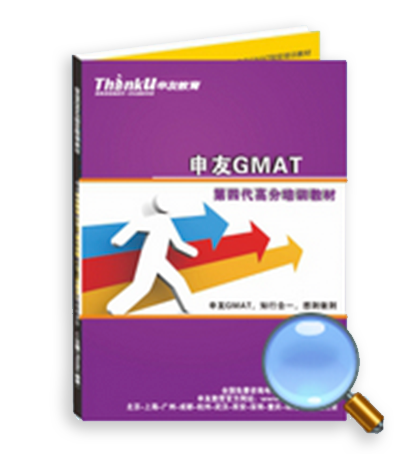Official16托福阅读Passage3 Planets in Our Solar System文本+题目原文+答案解析【雷哥托福】
2019-01-28 13:17:21 发布 来源:雷哥托福TPO16托福阅读Passage3 Planets in Our Solar System文本+题目原文+答案解析
Planets in Our Solar System
The Sun is the hub of a huge rotating system consisting of nine planets, their satellites, and numerous small bodies, including asteroids, comets, and meteoroids. An estimated 99.85 percent of the mass of our solar system is contained within the Sun, while the planets collectively make up most of the remaining 0.15 percent. The planets, in order of their distance from the Sun, are Mercury, Venus, Earth, Mars, Jupiter, Saturn, Uranus, Neptune, and Pluto. Under the control of the Sun's gravitational force, each planet maintains an elliptical orbit and all of them travel in the same direction.
The planets in our solar system fall into two groups: the terrestrial (Earth-like) planets (Mercury, Venus, Earth, and Mars) and the Jovian (Jupiter-like) planets (Jupiter, Saturn, Uranus, and Neptune). Pluto is not included in either category, because its great distance from Earth and its small size make this planet's true nature a mystery.
The most obvious difference between the terrestrial and the Jovian planets is their size. The largest terrestrial planet, Earth has a diameter only one quarter as great as the diameter of the smallest Jovian planet, Neptune, and its mass is only one seventeenth as great. Hence, the Jovian planets are often called giants. Also, because of their relative locations, the four Jovian planets are known as the outer planets, while the terrestrial planets are known as the inner planets. There appears to be a correlation between the positions of these planets and their sizes.
Other dimensions along which the two groups differ markedly are density and composition. The densities of the terrestrial planets average about 5 times the density of water, whereas the Jovian planets have densities that average only 1.5 times the density of water. One of the outer planets, Saturn, has a density of only 0.7 that of water, which means that Saturn would float in water. Variations in the composition of the planets are largely responsible for the density differences. █The substances that make up both groups of planets are divided into three groups—gases, rocks, and ices—based on their melting points. █The terrestrial planets are mostly rocks: dense rocky and metallic material, with minor amounts of gases. █The Jovian planets, on the other hand, contain a large percentage of the gases hydrogen and helium, with varying amounts of ices: mostly water, ammonia, and methane ices.█
The Jovian planets have very thick atmospheres consisting of varying amounts of hydrogen, helium, methane, and ammonia. By comparison, the terrestrial planets have meager atmospheres at best. A planet's ability to retain an atmosphere depends on its temperature and mass. Simply stated, a gas molecule can "evaporate" from a planet if it reaches a speed known as the escape velocity. For Earth, this velocity is 11 kilometers per second. Any material, including a rocket, must reach this speed before it can leave Earth and go into space. The Jovian planets, because of their greater masses and thus higher surface gravities, have higher escape velocities (21-60 kilometers per second) than the terrestrial planets. Consequently, it is more difficult for gases to "evaporate" from them. Also, because the molecular motion of a gas depends on temperature, at the low temperatures of the Jovian planets even the lightest gases are unlikely to acquire the speed needed to escape. On the other hand, a comparatively warm body with a small surface gravity, like Earth's moon, is unable to hold even the heaviest gas and thus lacks an atmosphere. The slightly larger terrestrial planets Earth, Venus, and Mars retain some heavy gases like carbon dioxide, but even their atmospheres make up only an infinitesimally small portion of their total mass.
The orderly nature of our solar system leads most astronomers to conclude that the planets formed at essentially the same time and from the same material as the Sun. It is hypothesized that the primordial cloud of dust and gas from which all the planets are thought to have condensed had a composition somewhat similar to that of Jupiter. However, unlike Jupiter, the terrestrial planets today are nearly void of light gases and ices. The explanation may be that the terrestrial planets were once much larger and richer in these materials but eventually lost them because of these bodies' relative closeness to the Sun, which meant that their temperatures were relatively high.
TPO16托福阅读Passage3Planets in Our Solar System题目
Question 1 of 13: According to the passage, each of the following statements comparing terrestrial planets with Jovian planets is true EXCEPT:
A. Terrestrial planets are closer to the Sun than Jovian planets.
B. Terrestrial planets have smaller diameters than Jovian planets.
C. Terrestrial planets have smaller masses than Jovian planets.
D. Terrestrial planets travel in a different direction than Jovian planets do.
Question 2 of 13: The word “markedly” in the passage is closest in meaning to
A. essentially
B. typically
C. consistently
D. noticeably
Question 3 of 13: Paragraph 4 mentions which of the following as a reason why terrestrial planets are dense?
A. They are made up of three groups of substances.
B. They are composed mainly of rocky and metallic materials.
C. They contain more ice than Jovian planets.
D. They contain relatively small amounts of water.
Question 4 of 13: Paragraph 4 supports each of the following statements about Saturn EXCEPT:
A. It is less dense than any of the terrestrial planets
B. It contains no rocky material.
C. It contains ices.
D. It contains a large percentage of gases.
Question 5 of 13: The word “meager” in the passage is closest in meaning to
A. rich
B. thin
C. unique
D. complex
Question 6 of 13: According to paragraph 5, which of the following statements is true of both Jovian and terrestrial planets?
A. The thicker the atmosphere, the smaller the planet's mass
B. The more varied the gases in the atmosphere, the higher the temperature
C. The higher the surface gravity, the higher the escape velocity
D. The less the atmosphere contributes to the total mass, the lower the temperature
Question 7 of 13: According to paragraph 5, what is a major reason that Jovian planets have much thicker atmospheres than terrestrial planets do?
A. Jovian planets have lower surface gravities.
B. Jovian planets have lower temperatures.
C. Jovian planets have lower escape velocities.
D. Jovian planets' gas molecules have higher average speeds.
Question 8 of 13: Paragraph 5 supports which of the following statements about the ability of planets to retain gases?
A. More-massive planets are less able to retain gases than less-massive ones.
B. Planets are more likely to retain heavy gases than light gases.
C. Jovian planets are unlikely to retain the lightest gases.
D. Only terrestrial planets have been able to retain carbon dioxide.
Question 9 of 13: In calling the cloud of gas and dust from which the Sun and all the planets are thought to have condensed "primordial," the author means that the cloud was
A. immense in size
B. composed of similar particles
C. present at the very beginning of our solar system's formation.
D. created from a great variety of different materials
Question 10 of 13: The word “eventually” in the passage is closest in meaning to
A. over time
B. long ago
C. simply
D. certainly
Question 11 of 13: According to paragraph 6, what is a possible explanation for the lack of light gases and ices on terrestrial planets?
A. The location of terrestrial planets caused them to lose some of the materials they once contained.
B. Terrestrial planets were formed much later than Jovian planets.
C. The composition of terrestrial planets was different from that of Jupiter.
D. Terrestrial planets were formed out of different material than the Sun was.
Question 12 of 14: Look at the four squares █ that indicate where the following sentence could be added to the passage. Where would the sentence best fit?
This explains their relatively low densities.
A. The substances that make up both groups of planets are divided into three groups—gases, rocks, and ices—based on their melting points.
B. The terrestrial planets are mostly rocks: dense rocky and metallic material, with minor amounts of gases.
C. The Jovian planets, on the other hand, contain a large percentage of the gases hydrogen and helium, with varying amounts of ices: mostly water, ammonia, and methane ices.
D. /
Question 13 of 13: To review passage, click View Text.
Terrestrial planets:
Jovian planets:
Answer Choices
A. Have relatively small sizes
B. Are grouped in the same category as Pluto
C. Contain relatively high proportions of ices
D. Have relatively high temperatures
E. Have densities that are generally lower than the density of water
F. Have relatively high escape velocities
G. Have a composition closer to that of the cloud from which they condensed
TPO16托福阅读Passage3Planets in Our Solar System真题解析
Question 1 of 13
正确答案:D
解析:EXCEPT题,排除法,提问整个文章,所以应该关注各段的开头。第二段提到了太阳系星球分成两类,第三四两段叙述区别;A的closer做关键词定位至第三段倒数第二句,正确,不选;B的diameter做关键词定位至第三段第二句,正确,不选;C的smaller masses做关键词定位至第三段第一句的size,正确,不选;D与原文第一段末句相反,错误,可选。
Question 2 of 13
正确答案:D
解析:markedly”显著的”,所以答案是noticeably
Question 3 of 13
正确答案:B
解析:以dense做关键词定位至第一句,但这句只是说两组行星的密度和构成差异很大,没给出原因,正确答案在第四句的density difference,提到组成物质的不同导致两者密度的差异,另外倒数第二句提到类地行星主要由岩石和金属材料构成,所以答案是B。A不是原因,C与原文相反,D文章未提及。
Question 4 of 13
正确答案:B
解析:EXCEPT题,排除法。根据第二段的分类,可知土星属于类地行星。A的dense做关键词定位至第四段的第二句、第三句,提到类地行星的密度大致是水的五倍,土星是水的0.7倍,所以A说土星比任何类地行星密度都小正确,不选;B的rocky material做关键词定位至倒数第三句,提到这两类行星都是由三种物质组成,气、岩石和冰,所以C说土星不含岩石材料错误,可选;同时证明C和D正确,不选。
Question 5 of 13
正确答案:B
解析:meager“稀少的,稀薄的”,所以答案B正确。原文提到类地行星有____样的大气层,所在句最开始有个in contrast表示对比,所以看前一句,前面提到类木行星有很厚的大气层,所以与厚相对的是薄。
Question 6 of 13
正确答案:C
解析:因为同时问到两种行星,所以不能单独找任何一种,要寻找共性。对应到第五段第三句及以后的内容,提到行星保持大气的能力取决于其温度和体积,下面分述了体积越大,表面引力越大,逃逸速度越大,气体难以逃离,另外温度越低,气体越不容易逃出,大气越厚。选C。
Question 7 of 13
正确答案:B
解析:根据关键词Jovian planets定位到第五段第七、八、九句:类木行星质量大,地表重力大,逃逸速度大,气体难以逃逸,另外分子运动依赖于温度,类木行星气温低,连最轻的气体也不容易逃出。ACD与原文相反。
Question 8 of 13
正确答案:B
解析:类木行星体积大,温度低,引力大,逃逸速度大,更容易有厚的大气层。A和C与原文相反;D错误,原文没有体现only这一层意思。另外根据第五段倒数第二句话中的unable to hold even the heaviest gas,可以推出重的气体是更不容易逃逸的。所以正确答案是B。
Question 9 of 13
正确答案:C
解析:修辞目的题,修辞点所在句子只是说了一个事实,所以往前看,前一句说太阳系形成的有序性使得天文学家相信太阳系和太阳本身是同时形成的。后面又说到有这样一个假说,认为构成所有星体的_____的尘埃和气体的构成成分与木星是类似的。既然前面讲到最初太阳系形成,强调了时间概念,后面应该是接着上一句说太阳系星体最初形成时构成成分如何如何,所以答案是C,另外primordial “原始的,最初的”。
Question 10 of 13
正确答案:A
解析:eventually“最后,最终”,所以A的over time正确。词汇所在句意思是:之前类地行星体积很大,有很丰富的气态物质,但是_____这些物质散失了因为离太阳太近。根据“之前”这样的时间对比,能推出eventually意为“最终”。
Question 11 of 13
正确答案:A
解析:以lack of gases and ices做关键词定位至第六段倒数第二句,这句话只是单纯说现象,最后一句才是解释,提到由于距离太阳近,类地行星最终失去了这些气态物质,所以答案是A。原文提到太阳系所有行星都是同时形成的,所以B错,CD与原文相反。
Question 12 of 13
正确答案:D
解析:三个提示点,分别为代词this,动词explain所表达的因果关系和名词low density;原文第二句说类地行星密度是水的五倍,接着就说类木行星密度只有水的1.5倍,说明类木行星密度低,所以选D选项。因果关系是:因为类木行星包含大量气体、冰,所以密度低。
Question 13 of 13
正确答案:Terrestrial planets: AD Jovian planets: CFG
解析:这篇文章是两个方面混在一起叙述的,第三四五段分别叙述了类地行星和类木行星在size,density,composition等几个方面的区别。
A选项对应第三段第二句,应该属于类地行星的特征;
B选项对应第二段最后一句:冥王星既不属于类地行星也不属于类木行星;
C选项对应第四段最后一句,属于类木行星的特征;
D选项对应第五段第三句,温度越高,逃逸速度越小,聚集气体的能力越差,所以应该属于类地行星的;
E选项有一定迷惑性,原文第四段说类地行星密度大类木行星密度小,说的是类木行星的平均密度是水的1.5倍,只有土星比水小,所以这个选项是错误的,不属于任何一类;
F对应第五段的第五六两句,属于类木行星;
G选项对应原文第六段第二句,属于类木行星。
综上:属于类地行星的特征有:AD;属于类木行星的特征有:CFG
全套TPO阅读原文+题目文本+答案解析手册(合计1300页文档),在雷哥托福微信公众号获取
雷哥托福上课详情请咨询老师
1、请联系官方QQ:2250281936;
2、请联系官方个人微信号:toefl12345;
3、请咨询官方电话:400-6021-727;
【使用提示】
1、雷哥托福在线直播课,不限地域,全球考生均可报名参与。
2、获取更多托福信息,请关注雷哥托福微信公众号:toeflgo






 400-1816-180
400-1816-180
















































































 请填写手机号
请填写手机号










 12G备考资料
12G备考资料
 直播
直播



















 分享成功
分享成功









 托福预测|2020年1月11日&12日托福考试机经预测最全资料版!
托福预测|2020年1月11日&12日托福考试机经预测最全资料版!
























草莓小菇凉:说的非常好,十分有道理,棒棒棒!
06-08 15:44:55